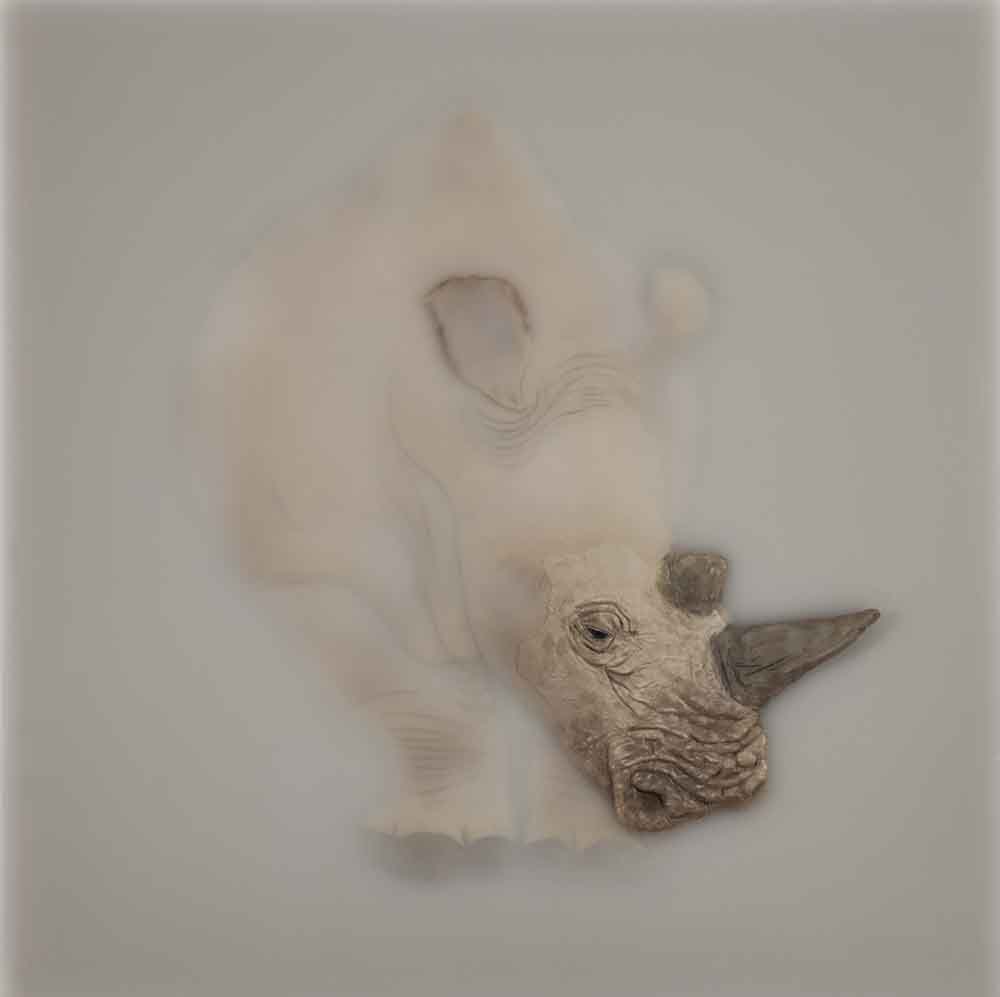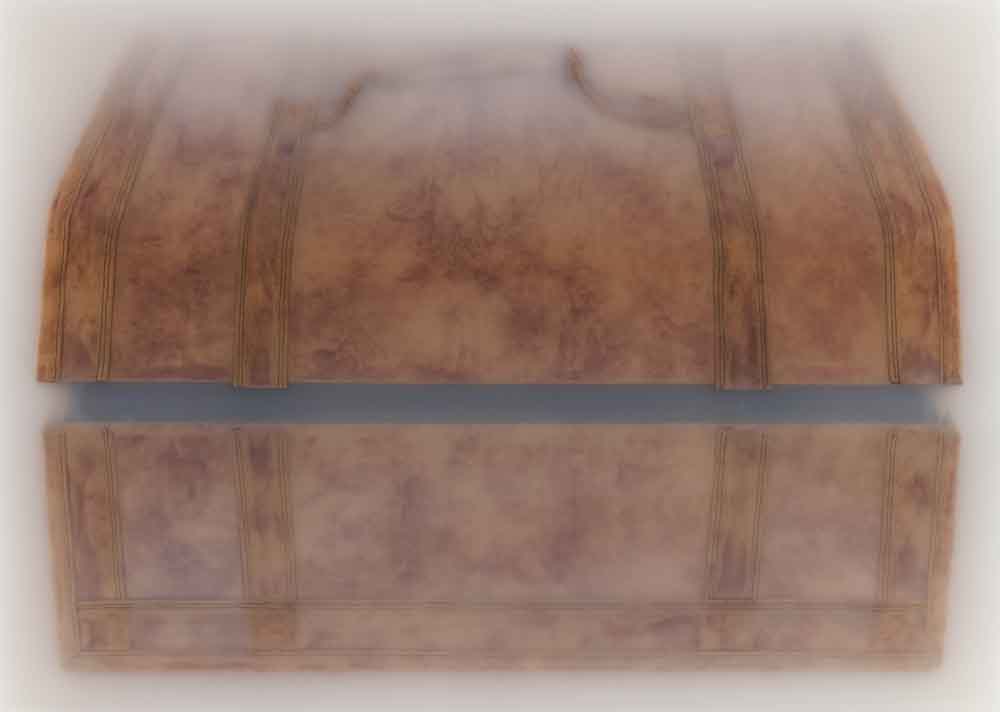METHOD OF DESCENT:CAI LEI SOLO SHOW EXHIBITION
As one of the emerging artists, Cai Lei was Born in Changchun, Jilin province in Dec, 1983. He graduate from China Central Academy of Fine Arts with the degree of Bachelor of Arts and Luxun Academy of Fine Arts attached middle school in June, 2009 and 2004 respectively.

Cai Lei’s sculpture has always shown an interest in flatness, an interest which surpasses even his interest in volume and space. For instance, in earlier series such as Us and Them, what most attracts the audience’s attention is not the shape of the sculptures but the undulating textures of their surfaces. Cai Lei has turned texture into a language and developed it to its extreme, as seen in the cracks and wrinkles in his portrayal of elderly people and his use of richly textured leather.
Texture is tactile. In art historian Heinrich Wölfflin’s classification of forms of artistic vision, the tactile has itsorigins in sculpture, because when people view sculptures, they are using their eyes to “caress” and “touch” the undulating volume and folded space of the shape. When this tactile aspect is consciously grasped, itdevelops into a respect for materiality, and so modern sculpture no longer seeks to cover the texture of thematerials, and in fact even purposefully highlights it.

But for Cai Lei, this emphasis on texture conceals a certain “de-sculpting” attitude. The use of texture in his works often comes at the expense of the sense of volume and space. In other words, Cai Lei does not need powerful, voluminous sculpting to support the sense of texture, which is his true interest. Thus, Cai Lei’s enthusiasm for relief carving is quite natural. In relief carving, the artist can use his language with no hesitation within a shallow, almost flat space.
Before 2013, however, Cai Lei’s interest in flatness was focused on themes of youthful sadness, with texture being used to express individual feelings or to recreate a sense of the realness of things, with the value of the language being secondary. But beginning in 2013, Cai Lei became aware of the conceptual aspect behind the language, leading him onto a path of artistic experimentation in language and methodology.
He began by discarding the semiotics of the past. In his new series Unfinished, the interior of an empty, unfinished home has no meaning or emotional direction, in that it has no added thematic value. One could say that Cai Lei’s choice of the unfinished home is like John Constable’s choice of clouds or Cézanne’s choice of Mont Sainte-Victoire: they were chosen because those objects are suited to playing out linguistic and methodological possibilities, not because of their cultural value as subject matter. In fact, in everyday living experience, the unfinished home is the most basic, unadorned existence, perfectly suited to Cai Lei’s use to present spatial issues within relief. Meanwhile, in a “still life” themed series, he has chosen extremely common white dishes, vases and jars, sometimes even plaster geometric shapes used in fundamental art training. He has chosen these things because they will not interfere with the purity of the question at hand.
He escaped the semiotics of the subject matter in order to focus on the relationships between vision and space. For relief sculpture, presenting space receding, rather than protruding, from the plane, is not a simple matter. The unique nature of relief sculpture, which lies somewhere between two and three dimensions, adds to the dialectic dimensions between vision and space. Cai Lei’s method is to first gradually push the rising points of the relief backwards, creating a recessive spatial logic. At this point, the focus of his work is no longer to highlight a body but to present the negative space around a body. This method is perfectly suited to conveying the interior space of an unfinished home, but if we are to approach these works through the standards of traditional relief sculpture, Cai Lei’s unfinished homes seem to have only a background, with no content in the foreground. This, however, is the result of his treatment of spatial language itself as content.
In order to heighten the sense of space, a visual element has been brought in once again, namely painting techniques. In the Unfinished series, Cai Lei uses the lighting produced by colors to enhance the visual illusion, forming abrasion between relief sculpture awareness and painting awareness. Cai Lei has concealed this clash of awareness behind silica gel. This semitransparent material brings in the perception of seeing through air from painting while also heightening the allure of the sense of space, drawing the viewer’s gaze ever closer. As they approach, they can gain a better feel for the subtle shifts between physical flatness and real space in these works. More importantly, the negative relief space has been condensed into a tangible solid, so that within this centimeter-scale space, a powerful tension arises from the visual illusion of space and the true physical depth.
Liu Cixin’s science fiction novel Trinity describes an approach to war between highly developed cosmic civilizations in which physical dimensions are reduced—three dimensions reduced to two—as a form of attack on a potential adversary. This is called a “dimension reduction attack” and the weapon involved is a transparent plane. When we first look at Cai Lei’s works, we intuitively sense that space has been compressed and sealed within, just like the two-dimensional universe in Liu Cixin’s novel.
In fact, Cai Lei is not the kind of artist who emphasizes abstract and metaphysical ideas. His work is rooted mainly in experience rather than concepts. For Cai Lei, this “dimension reduction” method is not just a skill but a language and concept as well. In other words, he has discovered a concept within experience, and then fused that concept into his experience, giving us a layered experience of both sensation and thought. It is like the bowl in Contents. We are first drawn in by its space, and then by the experience of its creator’s artistic concepts.